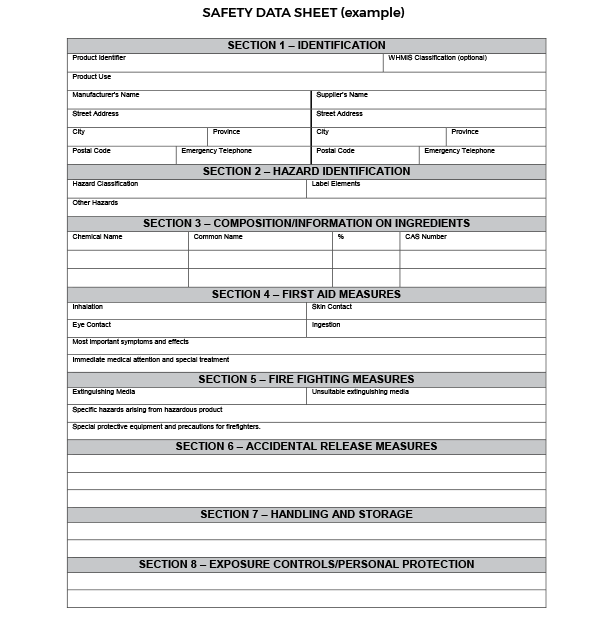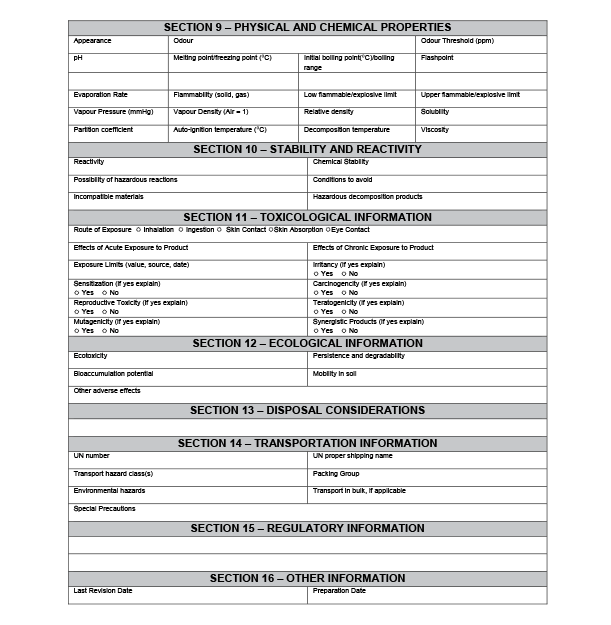The third part of the WHMIS information delivery system is the worker education program. Its purpose is to teach workers how to use the information on labels and SDSs so that they may protect themselves. In fact, increasing workers’ knowledge of the hazards of the materials they work with is the main aim of WHMIS. The importance of training cannot be neglected as the information provided by labels and SDSs will be of little use unless workers can understand it and determine how to apply it.
Requirements of a Training Program
A worker who works with a controlled product is any worker who stores, handles, uses or disposes of a controlled product or who supervises another worker performing these activities. All employees who work with, or in proximity to, a controlled product (including those who supervise them) must therefore be informed about the hazard information received from the supplier.
“In proximity” refers to the area in which a worker’s health and safety could be at risk during the storage, handling, use or disposal of the product or in emergencies, such as an accidental leak or spill.
In addition to the information contained on labels and SDSs, the employer must pass on to workers any hazard information of which the employer is aware, or ought reasonably to be aware, about the use, storage or handling of any controlled product, including products produced in the workplace.
Worker Training Program
Workers must be instructed in:
- Purpose and content of labels and SDSs, and the significance of the information they contain.
- Procedures for the safe use, handling, storage and disposal of hazardous materials, including products contained or transferred in pipelines, tanks, vessels, etc.
- Procedures to be followed when fugitive emissions are present.
- Emergency procedures for all situations involving a hazardous material.
Development of a Training Program
The provision of information is, in itself, not enough to prevent occupational illness and injuries. Both employers and workers must fully understand the legal requirements of WHMIS legislation as well as the potential hazards of controlled products and the measures necessary to minimize risks to health and safety. This requires an effective training program in the workplace so that all workers have access to hazard information, are able to understand it, and follow required procedures and precautions.


